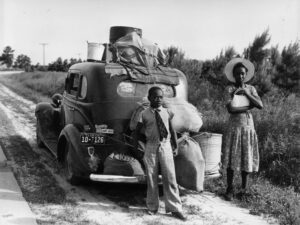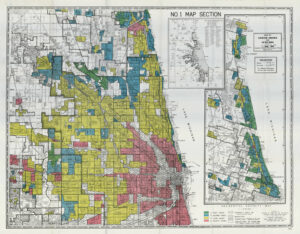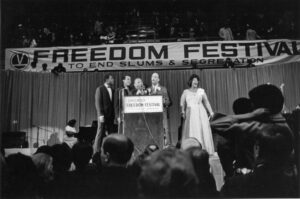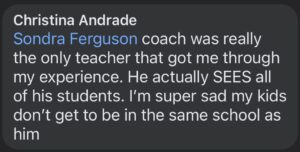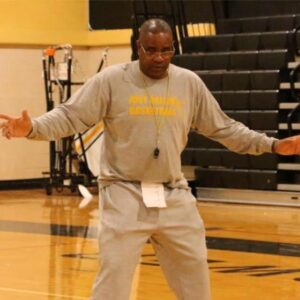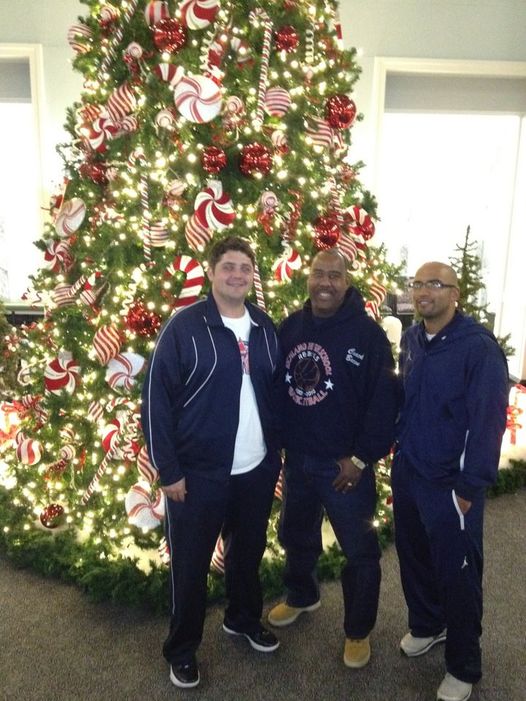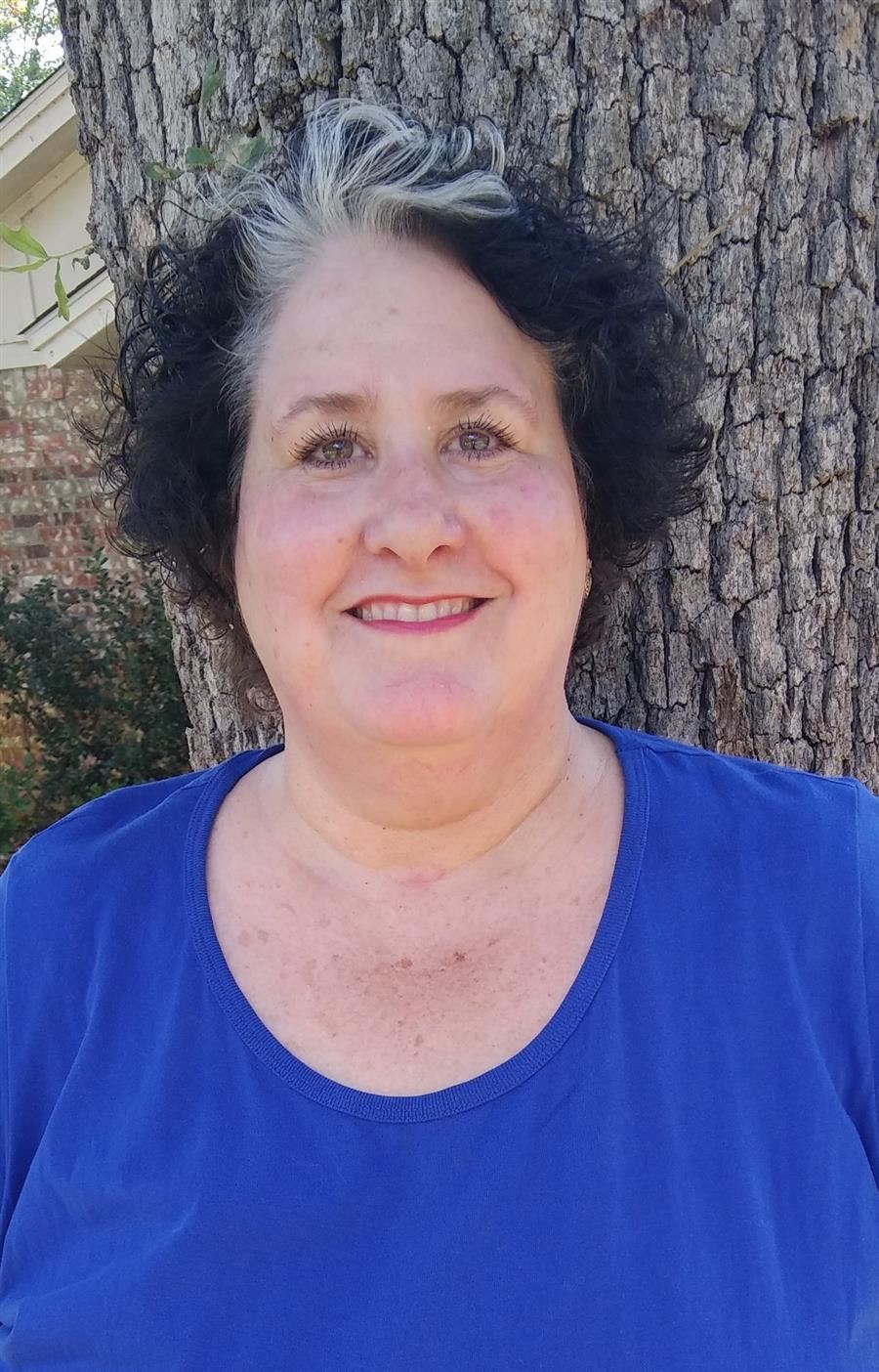As I walk out of the building, I hear cheers and see dozens of my students with signs of support. It’s the end of yet another long school board meeting where many of their classmates stood up and spoke on my behalf and for each other. It’s a dark, crisp night, it’s getting late and I know this will likely be the last time I get to address this group of students face-to-face. I step to the bullhorn and deliver a brief message of appreciation, love, pride, and support, then head home so we can put my 3rd grade son, Landon, to bed.
The Kids Are Alright
Before I go further I must note something that many may not have realized about the students who were leading protests and speaking out. Many in the crowd that night have just finished their early action applications to Harvard, Brown, MIT, Stanford, University of Texas Honors Program, and Rice. Most, if not all, of them are taking a full load of AP classes as high school seniors. They are students who have never skipped school a day in their life but quickly informed their parents that they would be walking out of school in protest because they believed so strongly in their cause. After many of them spoke on this night, they were chastised by another speaker saying “they should not get to speak – they don’t pay taxes.”
On this day two years ago, November 17, 2021, I saw a group of young people who, despite the opposition, found their voice. A group of students who had no time to engage in protests and the likes, made time. Their courage, leadership, and conviction landed them in the headlines of The Washington Post, refusing to be silenced. They represented what so many people feared – an engaged, educated young citizen capable of critical thinking and forming their own conclusions. These young people refused to drink from the fire hydrant of what may have been traditional “community” norms, but rather, questioned it.
Winds of Change
My time had run its course in the district, yet my youngest son was still enrolled there. He’d joined me in the district years prior and it was nice to have him so close to me. I could pop over for lunch when I had a few minutes. He could come over after school and shoot hoops with me before we went home. He loved his teachers, principal, and friends. And we enjoyed our rides to and from school together.
But at this, things have changed. For the last several months I would drive Landon to school, past my former school, drop him off, then head home where a whirlwind of media were chomping at the bits for their pound of flesh. Thankfully, I’d found a dear friend and PR Strategist throughout this process who helped screen out some of the sharks. But after the meeting on November 17, 2021, it was clear that I had to make the tough decision to withdraw Landon from the district at the Thanksgiving break and enroll him in our home district on the other side. He was sad. His friends and teachers were sad and they made him cool going away presents. We were all sad. But this was just the way it had to be.
Navigating Transitions
As I walk up to enroll Landon for his first day at his new school I’m met with the emotion that most every parent has felt at some point –
Am I doing the right thing?
Surely I could just suck it up and just make the drive, push down the emotional trigger of passing my former place of employment, and make it happen, right?
But through the mixed emotions I enrolled Landon in his new school, which is within walking distance from our house. Over the course of the next several weeks we created a new routine – walk to school, then at the end of the day pick up by the big oak tree, then walk home. We found rhythm and consistency. And, as luck would have it, one of Landon’s former teachers was good friends with one of his new teachers and they were able to discuss his progress.
Not only was he experiencing a transition academically, but he was watching the world around him unravel. He clung closer and closer to my side. While I tried to shield him from all that was going on and hide the pain, disappointment, and frustration in his presence, he knew something was off. He knows how much his dad loves being a school principal and now dad is no longer doing that. He is now accustomed to cameras and journalists following us to school or setting up in our home. And he is thriving in his new school setting.
I marveled at his resilience and growth, his capacity to adapt to change and pour out love. On many days where I felt my light begin to dim, he shared some of his with me to brighten the way. And over the course of the rest of the 21-22 school year and 22-23 school year it was much the same. This dude served as such an inspiration to me.
A Whole New World
As August came around, I was nearing the end of my required time outside of public education. But I knew where I would be on the first day of school for the 23-24 school year. I’d obtained my superintendent certification years ago and never thought I’d be using it. But God always has a way of making a way towards those things you once thought unattainable. For this school year I’d begin on the first day of school at a K-12 public charter school as superintendent.
Look at God.
But now I had a decision to make. With my older two children, Jordan and Lauren, I had the opportunity to serve in a school they attended. I got to coach Jordan as a basketball player (he loved it). When Lauren went into middle school, good ole dad was starting as a first year assistant principal (and you know she loved that). And now an opportunity has presented itself for me to be at school with Landon as a 5th grader, should we choose to transfer him to the school I’m at.
Decisions
For weeks prior we went back and forth. He’d been through so much change over the last few years. Relationships were formed with friends and teachers in his current school. And this was his year to be the big dawg on campus as 5th grade is the final year in that school. With us now being at different schools I definitely couldn’t drop him off in the mornings. Sparingly I’d be able to pick him up from school. I’d still probably get to join him for lunch as much as any other year. But things would be changing, for sure. So many considerations.
I drove to school alone on August 16, 2023. This was to be Landon’s first day of school, as well. His school day was set to start several minutes after mine and we would no longer ride together. With each mile I inched in traffic closer to school my emotions were everywhere, much like the cars that zoomed around each other. We’d been so torn on whether or not I should bring Landon to my school, which promised to be an amazing place, or leave him at his current school that was also amazing.
In an instant, I asked Siri to call my wife, who I knew would be up with Landon, preparing for his first day. As she picked up the phone I said,
“Honey, don’t send him to school today. I’m gonna bring him with me. What do you think?”
Yes. I know. I went from making a firm decision to asking a question in the same breath. That speaks to where my mind was at. But I just knew in my heart that this was the right move.
She went over to Landon with the phone on speaker and said “Hey bud, what do you think about going to school with Dad this year? Dad wants you to go with him.”
All of a sudden, the phone momentarily went silent. I thought “oh crap. Did I just mess this up? The first day of school is already stressful and now I’ve gone and made it extra stressful.”
Before I got too far along the downward spiral of my thoughts I heard Kerrie’s voice exclaim, “Oh my gosh, he’s smiling so big. Yes. He’s shaking his head, yes.”
The decision was made. Landon would join me at school for 5th grade. Our rides to and from school together would continue. He’d be in a place where he gets to learn in a small setting and enjoy the outdoors afforded at our beautiful, expansive campus.
A Day to Trot
Over the last few months we’ve both gone through transition – him, as a new student in a new space; me, in a new role in a new place. And it has been one heck of a journey navigating the winds of change.
Today was our annual Turkey Trot at our school. For the last several weeks, students were given the opportunity to sign up by grade level clusters to run in it. The winners of each race received a turkey to take home. Over the course of that time I’ve asked Landon every day if he wanted to run in the race. The dude is a strong, fast runner. But every day, the answer was, “no dad, I’m good.”
This morning we began as we do most Fridays with our Donuts with Dad at our favorite donut shop. Then, we had a conversation about everything from the upcoming anniversary of the JFK assassination to the conflict in the middle east. As we got to school and entered my office Landon looked at me and said, “Dad, I think I want to do the Turkey Trot”, to which I responded, “then let’s do it!”. Quickly, we went over to the sign up sheet to add his name.
After adding his name he said, “Dad, if I win the Turkey Trot, I want to give the turkey I win to someone who needs it.”
With my heart beaming with pride I said, “that sounds like a fantastic idea son. I’m sure there is someone who needs it.”
We had a great day today at our school. I was pied in the face by those who won the drawing from our canned food drive. Families feasted on wide food spreads, picnic style, with their children on the grounds. And the races were intense.
As I watched Landon round the last turn towards the finish line with no one in front of him I couldn’t help but smile. After so much hesitation about even running, he’d not only run the race, but won first place, thus securing that turkey to give away. After a great big hug, he was off to take his picture with the first place sign and a huge turkey in his arms. I could see the happiness in his face – the pride in his stance. He’d won the turkey he set out to win to donate to someone in need.
I stood there watching this young man with so much pride in my heart. To think about where we were two years ago on this very day. So much uncertainty, pain, grief, disappointment, and fear. Then the transitions over the course of the time from then to now. And now, this moment. Only by the grace of God.
Our Young People, Our Heroes
So often, we reserve the title of “hero” for adults or celebrities, but I know better. Heroes are the young folks I’ve described above. Youth who sacrificed so much of their time and energy to stand up for not only me, but their community. They were harassed online and in person, but never buckled under the pressure. They shook up things and made folks aware of what was going on in their community.
And my son, Landon. He is truly one of my heroes. He inspires me with his courage and resilience. The last couple years have been tough but he mets every challenge, head-on, and conquering them. I’m proud of his huge heart, empathy, and sense of compassion for others. His compassion knows no bounds, a beacon of light in a world that sometimes feels dim. I’m uplifted by his constant encouragement and love.
Landon. My son. Our little champion. My heart. My hero.
